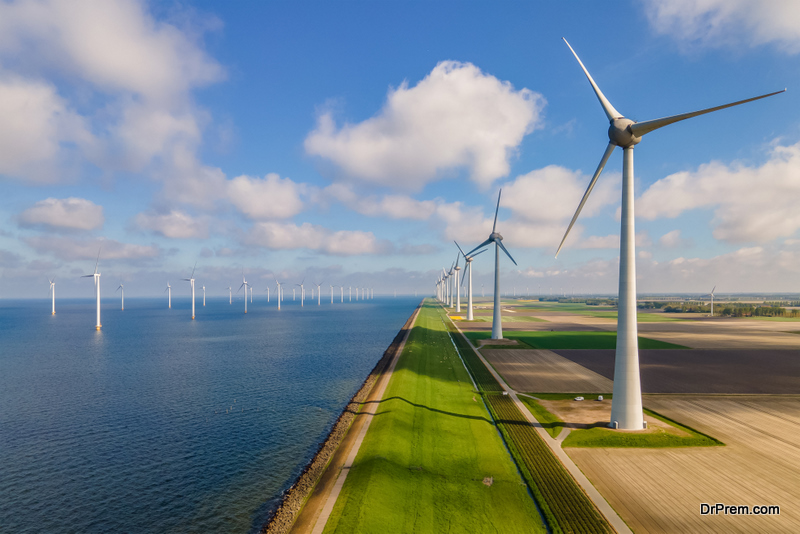The quest for clean and sustainable energy has accelerated in recent years, as the world looks for ways to fight climate change and lessen reliance on fossil fuels. Clean energy technologies, powered by innovation and breakthroughs, are leading this charge. From tapping into renewable energy sources to enhancing energy efficiency and storage, progress in clean energy technology has the potential to transform how we generate, use, and store energy. In this article, we will discuss some of the most notable developments in clean energy technology and their role in creating a greener future.
Progress in Solar Energy
Solar power plays a pivotal role in clean energy technology, and its efficiency and affordability have vastly improved thanks to recent advances. High-performance solar panels, such as monocrystalline and thin-film panels, are capable of converting a larger percentage of sunlight into electricity, increasing the overall solar installation output. Furthermore, innovations like bifacial solar panels that can absorb light from both sides, along with solar tracking systems that follow the sun’s trajectory throughout the day, contribute to an even higher energy production.
Wind Energy Innovations
Wind power is another essential element of clean_energy infrastructure, with technological advancements boosting its growth and feasibility. Turbine design and engineering have evolved, allowing the development of bigger and more efficient wind turbines that produce more electricity with less wind input. Floating offshore wind farms, a groundbreaking innovation, can harness more robust and consistent winds found in deeper waters, creating new opportunities for offshore wind power generation.
Integrating Clean Energy and Smart Grids
Incorporating clean energy sources into the power grid is vital for enhancing their efficiency. Smart grid technology has risen as a solution to handle the variability of renewable energy generation and optimize energy distribution. By employing advanced sensors, communication, and automation, smart grids can balance supply and demand, boost grid dependability, and enable real-time interaction between consumers and energy providers.
Energy Storage Innovations
Energy storage plays a crucial role in clean energy technology by addressing the intermittency of renewable energy sources. Progress in battery technology has paved the way for high-capacity, affordable energy storage systems. Lithium-ion batteries have experienced notable advancements in energy density and longevity, making them a sought-after option for grid-scale and residential energy storage uses. Other inventive solutions like flow batteries and solid-state batteries also hold potential in overcoming current restrictions and further enhancing energy storage capabilities.
Revolutionizing Inverters for Grid Stability
As renewable energy usage grows, inverters become increasingly important for maintaining grid stability. Grid-forming inverters are a recent innovation that promotes a more stable and resilient power grid. In contrast to conventional grid-following inverters, grid-forming inverters can independently control voltage and frequency, allowing them to reinforce the grid’s stability even during disruptions or in isolated areas with limited infrastructure.
Hydrogen: The Versatile Clean Energy Medium
Hydrogen has made its mark as a flexible and eco-friendly energy medium with various applications. Advances in hydrogen production techniques, such as electrolysis powered by renewables, have positioned “green hydrogen” as an appealing option for decarbonization across several sectors like industry, transportation, and power generation. Fuel cell technology, which transforms hydrogen into electricity with water as the sole byproduct, presents a practical solution for powering electric vehicles and offering backup electricity in remote or off-grid locations.
Carbon Capture and Utilization
Carbon capture and utilization (CCU) technologies aim to capture carbon dioxide emissions from industrial processes or power plants and repurpose them for valuable applications. One notable breakthrough is the use of captured carbon dioxide for enhanced oil recovery (EOR) to boost oil production while storing the carbon dioxide underground. This approach turns emissions into a valuable resource, incentivizing the adoption of CCU technologies as part of a comprehensive strategy to address climate change.
AI and Clean Energy
The integration of artificial intelligence into clean energy technologies is on the rise, resulting in improved energy production, distribution, and consumption. AI algorithms boost the efficiency of renewable energy systems, forecast energy demand, streamline energy storage operations, and oversee energy usage effectively. Merging AI with clean energy leads to increased sustainability and cost-efficiency in the energy industry.
The progress in clean energy technology is driving our world towards a greener and more environmentally sustainable future. The implementation of a comprehensive national adaptation plan that incorporates advancements in clean energy technology can play a pivotal role in enhancing the resilience of countries to climate change impacts while fostering a more sustainable and low-carbon energy future. Ranging from solar and wind power advancements to energy storage breakthroughs and grid optimization strategies, clean energy innovations constantly develop and modify how we generate and utilize energy. The global community is focusing more on fighting climate change and moving towards low-carbon energy systems, making these cutting-edge improvements essential in molding a cleaner and more environmentally friendly world for upcoming generations. The relentless search for inventive clean energy solutions remains vital for realizing our shared goal of a carbon-neutral and robust global power system.
Article Submitted By Community Writer




